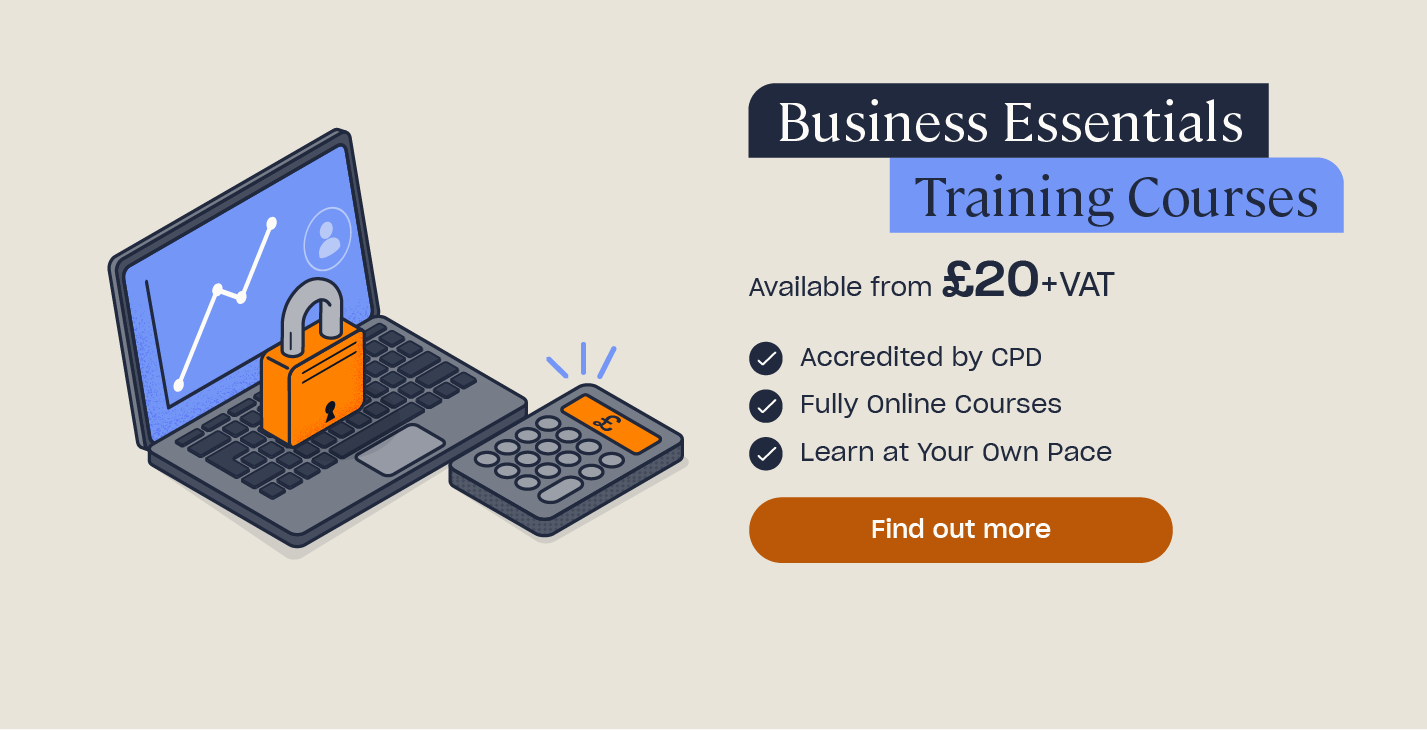How to Chair a Meeting Effectively
Meetings are vital in the workplace as they keep everyone involved in discussions about ongoing projects, upcoming events and company success. Meetings also help to make people feel included, trusted and important members of the team.
For meetings to run smoothly, it is crucial to have someone to act as the meeting chair. In this article we will outline the responsibilities of a chairperson, explain some of the skills required and discuss how to chair a meeting effectively, along with providing some useful tips.
What are the Roles and Responsibilities of a Chairperson?
The role of a chairperson is to help meetings run smoothly and efficiently, while ensuring the agenda is followed. It is their responsibility to lead the meeting, maintain order and ensure everyone gets to have their say. Furthermore, if the meeting goes off topic, it is the chairperson’s responsibility to guide the conversation back to the agenda and stick within the time constraints of the meeting.
The chairperson is important because all meetings, even if they’re small or informal, need some direction and organisation. Without a chairperson, meetings can run late, lead off topic and prevent people from having their say.

The main roles and responsibilities of a chairperson include:
Getting through the agenda – the chairperson needs to work through the agenda, introducing and covering all items whilst keeping an eye on the time and moving the discussion along if necessary. They must be able to guide ‘off topic’ conversations back to the main points of the meeting while ensuring that everyone has a chance to contribute.
Involving everyone – meetings should involve discussion and debate, however, as a chairperson, you need to ensure everyone is heard. This can often involve encouraging those who are quieter in meetings to have their say while sometimes restricting those who over talk.
Reaching decisions – it is the chairperson’s responsibility to pull together the points discussed and reach a decision. If there are different points of view, they should be summarised and the potential decisions should be presented clearly. Before moving to the next agenda item, the chairperson should clarify and confirm the decision that has been made.
Maintaining order – sometimes the chairperson will have to deal with challenging people or heated discussions. It is their responsibility to be firm, consistent and remind people of the meeting rules.
It is important to note that meetings might take place face-to-face but also virtually as remote working is becoming increasingly popular. How the meeting takes place can affect how the chairperson carries out their role.

The following can impact how smoothly a virtual meeting runs:
- Being unable to see people’s body language.
- Missing verbal queues, for example, a pause for thought might be interpreted as the person finishing what they were saying.
- Difficulty knowing who will talk next and when.
- Technical difficulties, such as drops in signal, interrupting the flow of the meeting.
The chairperson may have to work even harder during virtual meetings to ensure they run smoothly. Remember, if you are the chairperson, you have been given a role to fulfil and you must remain in control of the meeting – even if it is virtual.
In some cases, you may want to have a rotating chair. This means that each person gets a chance to be the chairperson and the role is swapped each time there is a meeting. This method spreads out the responsibility and gives everyone a chance to run the group. It can also result in people being more understanding of the chairperson once they have had to fulfil the role themselves.
What Skills Do You Need to Chair a Meeting?
A good chairperson helps meetings to run smoothly and efficiently. To ensure that the chairperson can fulfil their role and responsibilities, there are certain skills that are needed.
Some of the skills that a good chairperson will have include:
- Remaining attentive to what is being said in the meeting, this involves active listening which is a very useful skill to acquire.
- Time management as the chair is in charge of covering the agenda within a particular space of time.
- Note taking, the chairperson is sometimes required to take minutes of the meeting, or at least take note of the actions for the next meeting.
- Being fair and drawing a balance between hearing everyone’s views and getting through the agenda.
- Preparing for the meeting, this involves making the room ready (if the meeting is face-to-face), ensuring the agenda is correct and making attendees aware of what is expected of them.
Looking to learn more?
Our Business Essentials Courses cover the fundamentals that every business needs, including Communication Skills, Minute Taking and Equality and Diversity. Take a look if you want to learn how to make your business even more successful.
How to Chair a Meeting with Confidence
As mentioned, there are many useful skills that a chairperson should have to ensure meetings run smoothly. There are also some tips you can follow to help you, however confidence in your role will come with time and practice.

Before the Meeting
There is a lot of preparation involved in running a meeting to ensure it will be successful. If you are the chairperson, there are a few things you need to do to prepare for a meeting:
- It is paramount that you understand the purpose of the meeting and the overall goal so you can ensure that the discussion is productive.
- You should prepare the meeting agenda and ensure you understand each point. The agenda should be based on the main purpose of the meeting that you identified beforehand.
- Ensure any presentations, electronics and other devices are set up and tested in advance.
- Prepare any food or drinks that will be served during the meeting.
- Send a reminder to all attendees before the meeting, if necessary.
During the Meeting
One of the responsibilities of the chairperson is to let everyone have their say, therefore, you want everyone to feel welcome and comfortable about speaking and putting their point forward. Here are a few tips:
- Welcome people as they arrive.
- Make sure everyone has an agenda (put them on the chairs or hand them out at the door).
- Introduce yourself and any speakers.
- If it is a small meeting, ask everyone to introduce themselves.
- Explain to everyone what the meeting is about and outline the rules of the meeting. For example, don’t interrupt people and respect other people’s views.
- Take notes and minutes throughout so you aren’t relying on your memory and don’t forget anything after the meeting.
- Ensure everyone has their say, this includes not allowing interruptions from other people whilst someone is talking.
- Keep moving forward and stick to the agenda.
- Keep your eye on the time to make sure all agenda points are covered sufficiently, this can mean bringing the conversation about one agenda item to a close. If necessary, you can organise a future meeting about certain topics that require further discussion.
- Direct people to make a note of any questions they have so they can be discussed after all agenda points have been covered.

After the Meeting
After all the agenda items have been covered, you should open the meeting for questions and AOB (any other business). Following questions, you should outline clear actions for the next steps. These should include who is going to carry out each action, what each person is going to do and when this will be completed.
When everyone is content that their questions have been answered, you should thank all attendees for their attendance and end the meeting.
After the meeting you should check through the minutes and notes taken, then email them to all attendees. This should include the purpose of the meeting as a reminder and outline the agreed next steps.
Tips for Chairing Meetings
Chairing a meeting can be a daunting role to undertake, especially if you have never done it before. We have discussed the skills required for the role and outlined what to do before, during and after a meeting. Below are some general tips for chairing a meeting:
- If there are conflicting ideas, summarise the points on each side and ask for other people’s thoughts. If someone is continually critical, ask them for their ideas about how to approach the situation.
- It’s important to stick to the agenda to keep things moving and ensure each point is touched upon. However, this doesn’t mean that you can’t allow the meeting to stray away from the agenda once every point is covered. Try to strike a balance between accepting input that falls outside the agenda without allowing the meeting to become side-tracked.
- If it’s a larger meeting, you might want to assign some roles and responsibilities to others. For example, asking someone else to write the minutes.
- Don’t be under-assertive. You’ve been given a role, and people will be looking to you for guidance. Don’t be afraid of speaking out.
- If lots of people want to speak, keep a list of whose turn it is to speak next to remind you. Make sure people know you have noticed that they want to speak.
- Stop people from talking for too long. Be firm and consistent but not aggressive. If someone is talking for a long time, interrupt them and say something like “thank you for your contribution, you’ve raised some interesting points. I’m going to stop you there for the moment so other people can comment on this issue.”
- Give preference to people who haven’t spoken before. Say something like “I know you’ve got your hand up, John, but I’m going to take Mary first as she hasn’t spoken yet.”

The purpose of any meeting is to determine a successful outcome. The best way to check if you have chaired an effective meeting is to determine a clear outcome and a way to move forward. After the meeting, refer back to the purpose that you identified before, did you achieve this?
You could also ask attendees for feedback when you send them the meeting minutes, to check on how successful you were in your role as chair.
What Should You Do if the Meeting Overruns?
Always start meetings on time. Delaying the start to wait for late comers is disrespectful to those who arrived on time, and it reinforces unprofessional behaviour. You should start on the dot and any late arrivals will get the message if you consistently start without them.
Be prepared and aware of when to move on from one agenda point. The most common cause of meetings overrunning is prolonged debate. If you are struggling to reach an outcome, it is generally a sign that the attendees need further information or time to research the issue. The best approach is to stop the discussion and reconvene at the next meeting.
Any new issues that are raised under AOB, should not be discussed at the meeting if you are short of time. They belong on the agenda of a subsequent meeting.
A chairperson is crucial for a meeting to run smoothly. It is their responsibility to ensure all agenda items are discussed and to maintain order throughout. There are certain skills that are beneficial to have if you are fulfilling the role of chairperson. Some general tips include keeping an eye on the time, being assertive and sticking to the agenda.
Further Resources:
- How to Improve Active Listening in Communication
- How To Take Useful Minutes Of A Meeting
- Minute Taking Quiz
- How to Write a Business Letter & Envelope
- 6 Types of Leadership: Which Leadership Style is Right For Me?
- Online Business Essentials Courses










